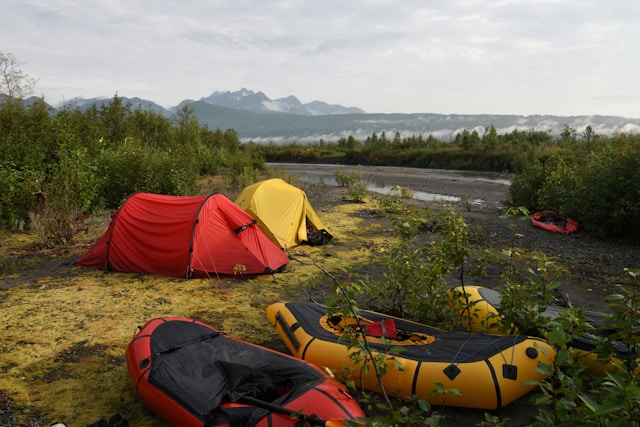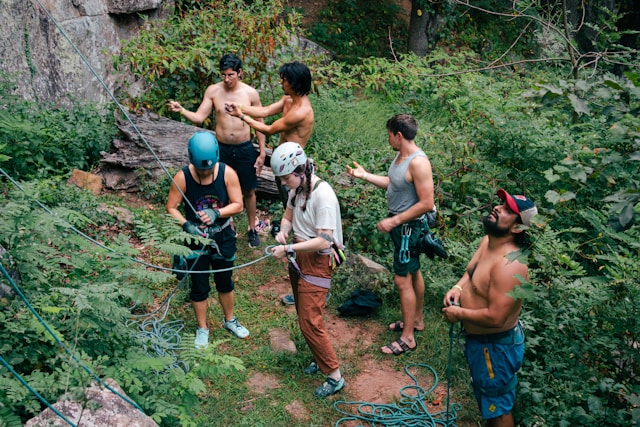Hey everyone, Anya here! So, I’ve been itching to share something I’m super passionate about: packrafting for fishing. For those of you who don’t know, packrafts are basically super lightweight, inflatable boats that you can pack into a backpack. Yeah, pretty cool, right?
I’ve always loved the idea of reaching those untouched fishing spots that are just too remote to hike to, and packrafting? Well, that’s the golden ticket. It opens up a whole new world of angling possibilities. Imagine floating down a pristine river, casting your line into waters where the fish haven’t seen a lure in ages. Sounds like paradise, doesn’t it?
Why Packrafting and Fishing are a Match Made in Heaven
Okay, so why is this such a great combo? First off, it’s all about accessibility. Packrafts let you access those hard-to-reach lakes, rivers, and streams that are often teeming with fish. Forget battling crowds at the usual spots – you can find your own slice of fishing heaven. Plus, let’s be honest, the scenery is usually pretty spectacular too.
And let me tell you, there’s something incredibly peaceful about floating along, surrounded by nature, with just the gentle sound of the water and the occasional splash of a rising fish. It’s a total escape from the everyday grind. I honestly admit, when I first tried it, I almost spilled my coffee! But I quickly got the hang of it.
Techniques for Fishing from a Packraft
Now, fishing from a packraft isn’t quite the same as fishing from a “real” boat or the shore. You’re dealing with limited space and stability, so a few adjustments are key. I’ve experimented with a few approaches and found what works best for me. So, let me get right to it. What are the keys to packrafting safety?
- Keep it Simple: Overpacking is a killer! Bring only the essential gear. I usually stick to one rod, a small selection of lures/flies, and my trusty fishing pliers.
- Master the Paddle-Cast Combo: This takes practice, but being able to paddle and cast efficiently is crucial. Try using your non-casting hand to make small adjustments with the paddle while you cast with the other.
- Anchor Smart: If you want to stay put in a specific spot, a small, lightweight anchor is your best friend. Just make sure it’s easy to release in case of an emergency.
- Consider a Stripping Basket: Especially useful when fly fishing, a stripping basket keeps your line from getting tangled in the raft.
Essential Gear for Packrafting Anglers
Alright, let’s talk gear. This is where things can get a little overwhelming, but I’ll break it down for you. Remember, weight is your enemy, so choose wisely!
- The Packraft: Obviously! Look for a packraft specifically designed for fishing, with features like rod holders and extra D-rings for attaching gear. I made this complete packrafting gear list to help you choose a packraft, a paddle, safety gear, and all the packraft-compatible backpacking gear you need for multi-day expeditions.
- Paddle: A lightweight, four-piece paddle is ideal for packrafting. Carbon fiber is a great option for weight savings.
- PFD (Personal Flotation Device): This is non-negotiable. Always wear a PFD when you’re on the water.
- Fishing Gear: Rod, reel, line, lures/flies, tackle box, pliers, etc. Choose gear that’s appropriate for the type of fishing you’ll be doing.
- Safety Gear: First-aid kit, repair kit for the packraft, knife, whistle, navigation tools (map, compass, GPS), and a communication device (satellite phone or personal locator beacon).
Safety First!
Okay, folks, here’s the thing – safety precautions are absolutely essential! No fishing trip is worth risking your well-being. Always check the weather forecast before you head out, and be aware of changing conditions on the water. Cold Weather Packrafting Safety Tips: Wear a Drysuit – No Exceptions. Layer Appropriately Underneath. Never Go Alone. Always Wear Your PFD. Technical paddling skills, safety and rescue skills, river communication, group management, gear knowledge and trip planning skills all take time to learn but…
- Scout Ahead: If you’re paddling a river, scout any rapids or obstacles before you commit to running them.
- Dress Appropriately: Wear layers of quick-drying clothing. Even on a warm day, the water can be surprisingly cold.
- Tell Someone Your Plans: Always let someone know where you’re going and when you expect to be back.
- Learn Self-Rescue Techniques: Knowing how to right your packraft and swim to shore is crucial in case of a capsize.
Final Thoughts
Packrafting for fishing is an incredible way to experience the outdoors and access some truly amazing fishing opportunities. It requires some planning, preparation, and a willingness to learn, but the rewards are well worth the effort. I think this method should work… At least in most cases. Although, of course, we still need to check.
So, what are you waiting for? Grab your packraft, your fishing gear, and get out there and explore! And hey, if you have any questions or tips of your own, feel free to share them in the comments below. Tight lines, everyone!
Happy fishing!
-Anya




